Where is Torrevieja?
Torrevieja is a popular resort town in the province of Alicante on the Costa Blanca in Spain. It is located on the shores of the Mediterranean Sea. The city is also washed by the salty lake La Mata, even more salty Pink Lake (Salinas de Torrevieja), and infrequent rains.
Torrevieja is located in the southern part of the Costa Blanca, in:
- 50 km from Alicante;
- 44 km from Alicante airport;
- 62 km from Murcia Airport;
- 236 km from Valencia;
- 460 km from Madrid;
- 570 km from Barcelona.
Most visitors arrive to Torrevieja through Alicante Airport. But there are other options as well. We describe all of them in the detailed guide “How to get to Torrevieja”.
Weather, climate
The weather in Torrevieja is comfortable at any time of the year. The number of sunny days in a year is 320. Summer in Torrevieja is not extremely hot. Due to the dry climate, the heat is more easily tolerated. Fallouts are rare. During the summer season, they happen exceptionally rarely.
Winter is warm. Daytime temperatures in January are around 15°C. Sometimes it’s warmer than 20 °C. At night, the temperature usually drops to 7-10 °C. Basically, it’s warm outside in winter. Many people during the day walk in shorts and T-shirts, sunbathe on the beach. Some even swim. But it’s only as warm under the direct sunlight. As soon as you get into the shade, the sensations change dramatically. And even less comfortable temperatures await in housing without heating. And it is a usual thing in Torrevieja.
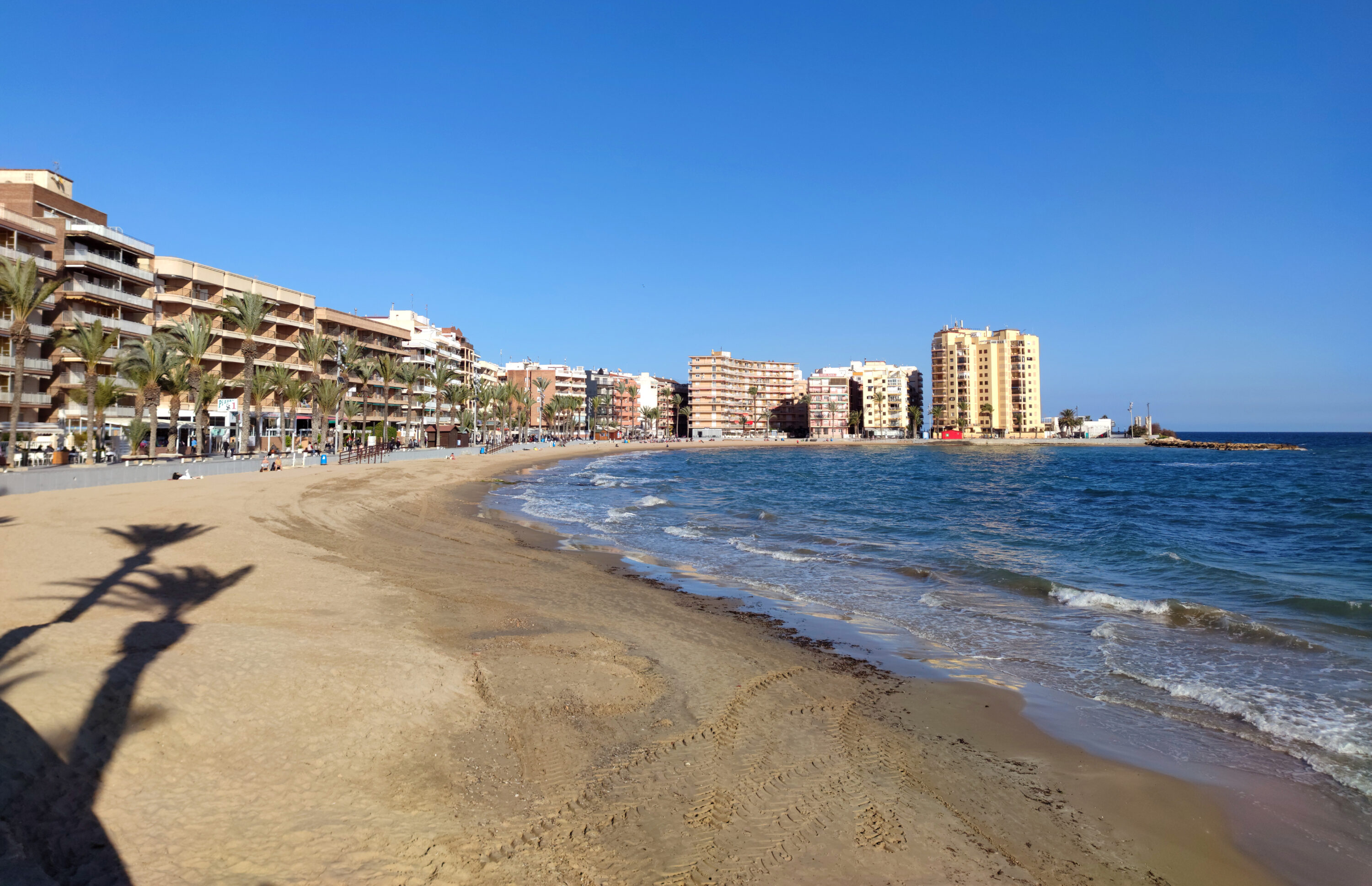
The swimming season here is long. It lasts from May to November. Although, as mentioned above, you can also swim in winter. In July-September, the water on the beaches of Torrevieja is hot. 28°C? No problem at all. It doesn’t even always feel like you came in to freshen up.
In winter, you can go into the water. At first, it feels very cold. But you get used to it after a couple of minutes. However, it is not a good idea to swim to the depth.
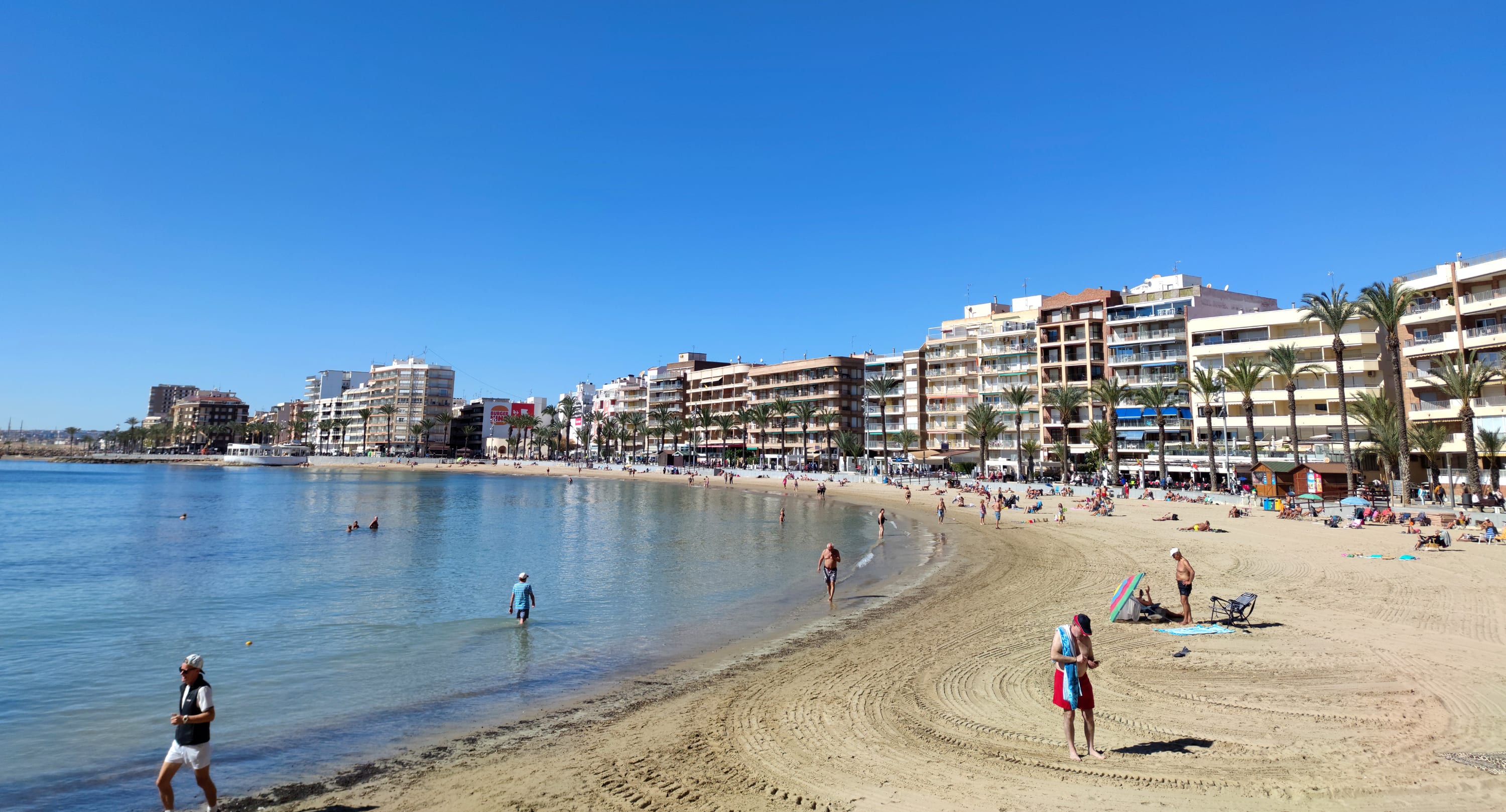
Beaches
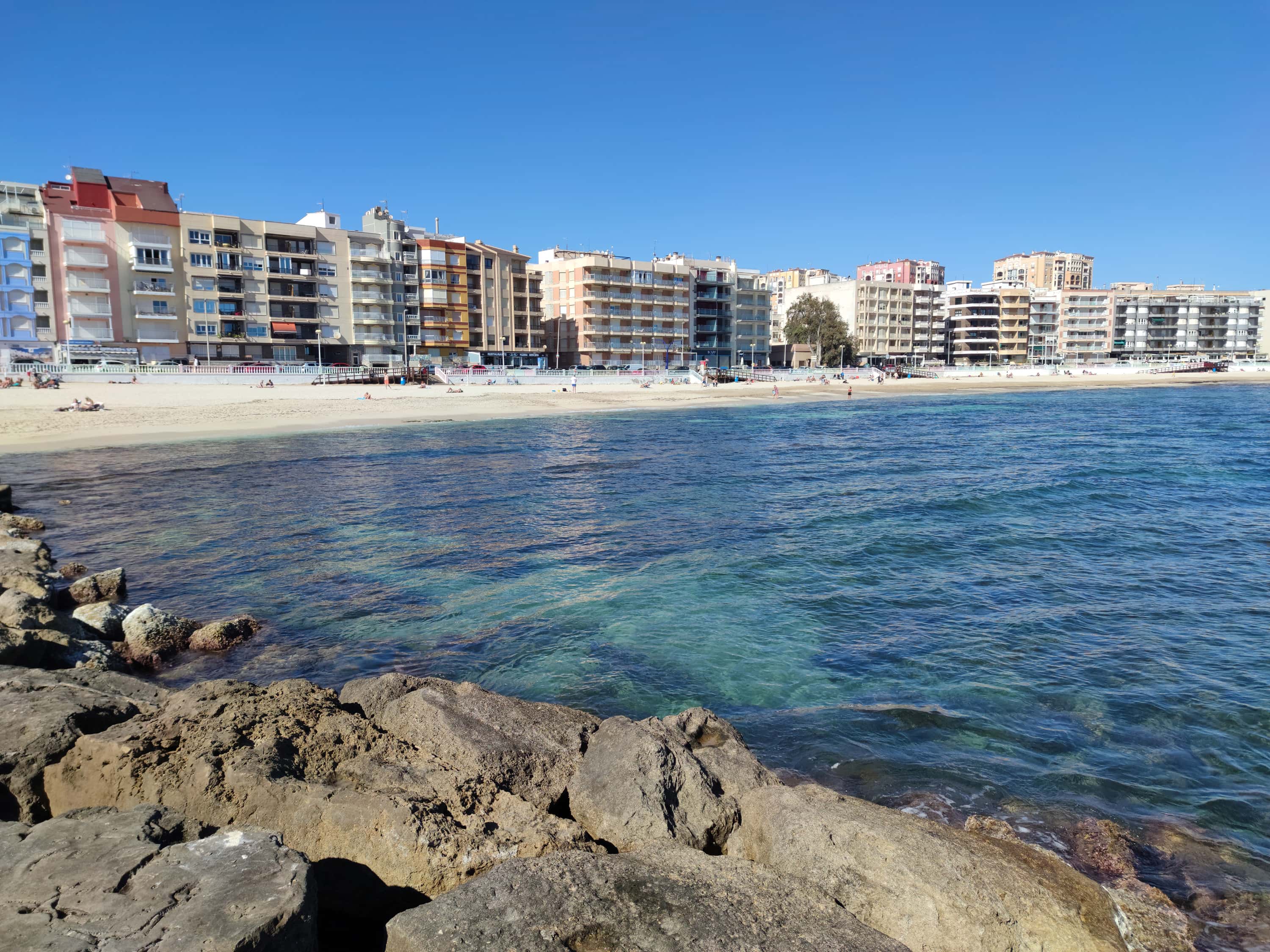
There are many beaches in Torrevieja. Their total length is approximately 25 km. There are beaches for every taste – sandy, rocky in small bays, sandy in bays. With a sandy bottom and not so clear water. Rocky bottom and clear water. Crowded and not so crowded. In the city and outside the city. All beaches are well maintained. Just choose which suits you.
Some of the beaches are located along the long promenade of Torrevieja. Others can be reached by foot or by bus. Or using your own or rented car or taxi.
The main beaches of Torrevieja:
- Playa del Cura
- Playa los Locos
- Playa del Acequión
- Playa del los Náufragos
- Platja de la Mata – in the suburbs
- Campomar – nearby
- Guardamar del Segura – nearby
History
The town of Torrevieja is relatively young and cannot boast of such a rich history as neighboring cities – Cartagena, Murcia or Alicante. Until the 19th century, there was a small village here that consisted of a watchtower with an agglomeration of several houses. And the status of the city was granted only in 1931.
The name Torrevieja appeared by concatenation of two words – Torre (“tower”) and Vieja (“old”).
Torrevieja began to turn into a city in the usual sense of the word at the beginning of the 19th century thanks to the extraction of salt in Pink Lake (also known as Salinas de Torrevieja or simply Laguna Rosa). Namely, after the relocation of the salt office of the La Mata company to this area. Since Torrevieja has become one of the largest centers of salt mining in Europe, it became necessary to transport it. As a result, a rather busy port was built in the city.
In 1829, Torrevieja, which had just begun to flourish, had to be rebuilt from scratch after a devastating earthquake. In an unequal battle with the forces of nature, the symbol of the city, the watchtower, also fell. However, a promptly launched crowdfunding campaign made it possible to raise money and rebuild the tower. Although, the replica turned out to be much smaller than the original.
The reincarnation of the tower has survived to this day. Now it is called “Moor’s Tower” (Torre del Moro) and is located in the park of the same name on the town’s outskirts. The views from it are no longer the same as before. Moreover, the entrance to the top is closed. But from the lower level, you can still admire how the locals walk their dogs in the park, leaving numerous “gifts” to this historical place.
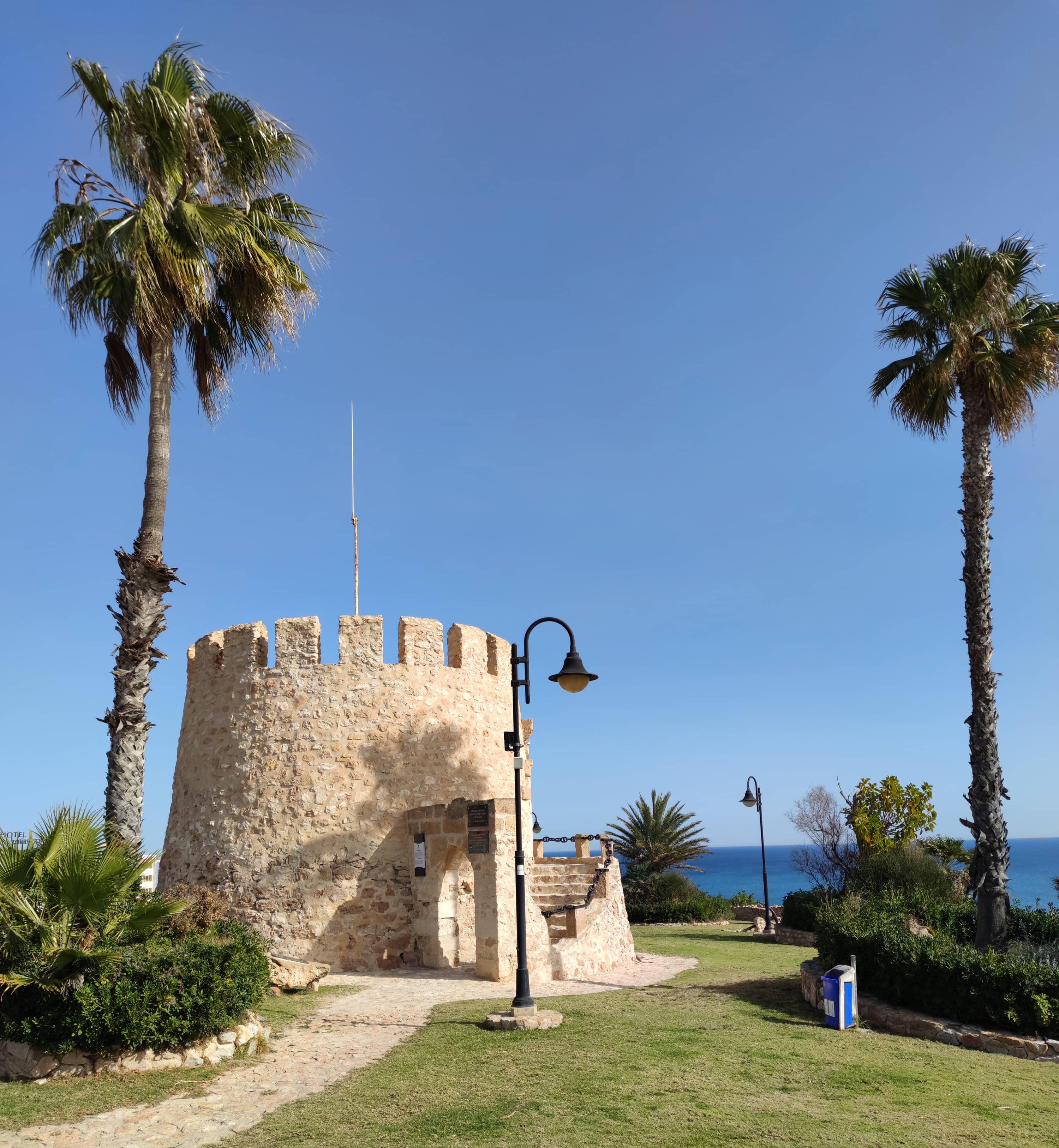
Toward the end of the 20th century, Torrevieja became a popular tourist destination. British were the first to come. Moreover, many of them came here not only to have a rest, but also began to buy housing and move here on a permanent basis. Over time, good tourist infrastructure has grown in Torrevieja. Urbanizations started to grow in the city’s vicinity like mushrooms after the rain.
Modern Torrevieja is still popular among tourists. Although the heyday, perhaps, has already remained in the past. But there is a plus in this. Compared to other resorts on the Costa Blanca, such as Alicante, Benidorm, Calpe and others, prices in Torrevieja are more affordable.
And salt mining in Torrevieja still plays a significant role in the city’s economy. At the same time, many salt mines in Europe have long been closed and become history. In Torrevieja, you can see how in the middle of the salt mountains, cyclists leave for the start of the Vuelta a España – one of the three most prestigious multi-day cycling races.
Population
The population of Torrevieja is 83 thousand people. It is an estimated “legal” number of inhabitants. Actual numbers vary by time of year. At the peak of the season, Torrevieja becomes rubber – the actual number of people in the city increases several times.
Rapid population growth has been observed in Torrevieja since the late 80s – early 90s of the XX century. It became possible due to the zoning of land and the beginning of active development of the area. Growth continued until the early 10s of the XXI century. And it coincided with the period when Pedro Ángel Hernández Mateo headed the town as mayor – 1988-2011. After 2012, the population of Torrevieja began to decline noticeably.
The ethnic composition of the population is very diverse. The Spaniards here are about half of the total number of inhabitants. But this is “legally” and out of season. There are many foreigners in Torrevieja. By inertia, they keep considering that most local expats are British. And this is no longer a fact. After Brexit, the conditions of their stay in Spain changed for the worse. The residency has become a big problem for the British. Many had to return to the UK. Including those who settled in Torrevieja thoroughly and long ago, 15-20 years ago.
Therefore, now in Torrevieja, perhaps, most of all expats came from the countries of the deceased USSR and Scandinavia. There are still a lot of UK citizens, despite the difficulties that have arisen. Many Bulgarians and Romanians. Of course, Germans. In addition, many Moroccans and quite a few Colombians live in Torrevieja.
Architecture
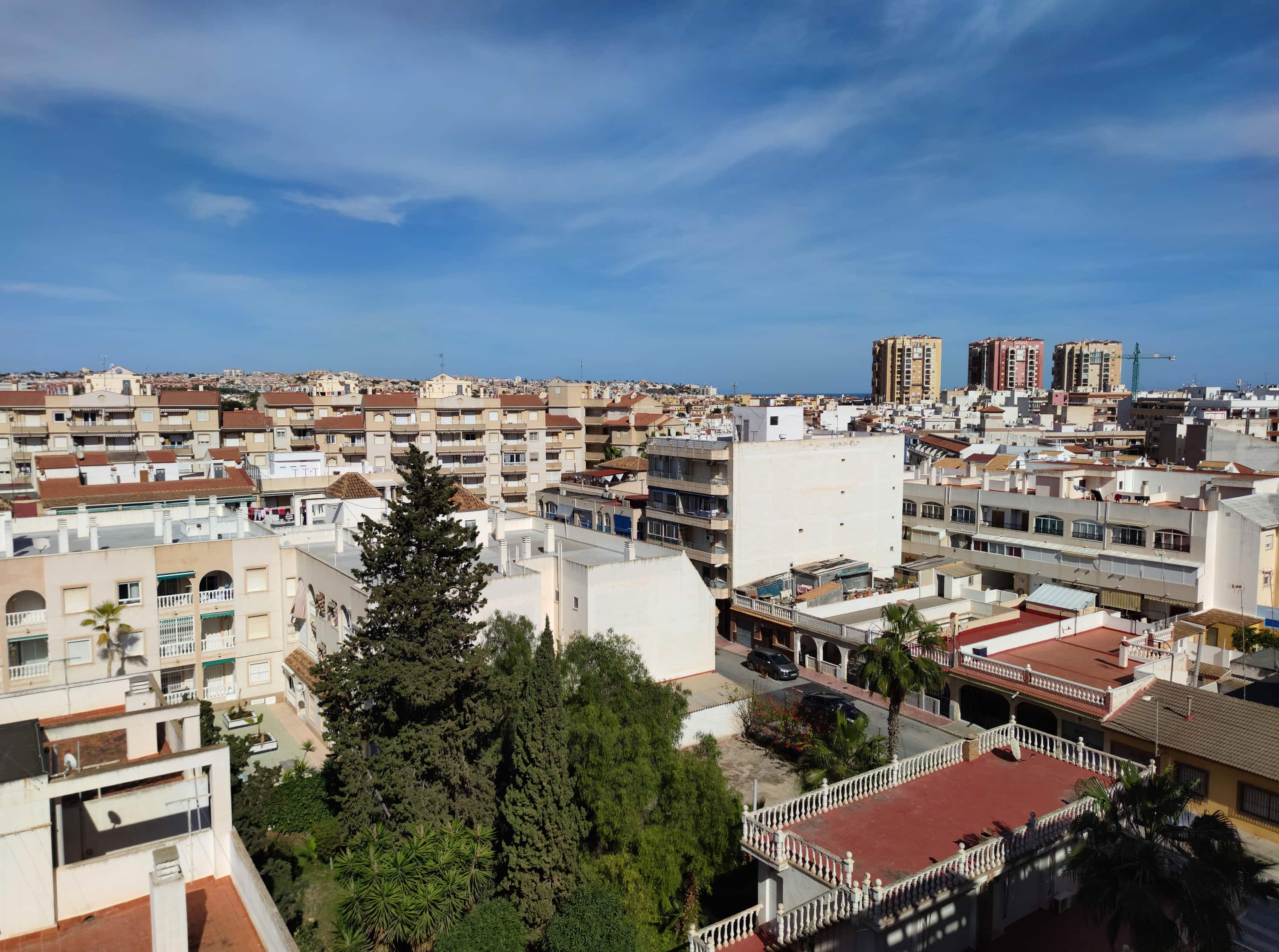
There are no skyscrapers in Torrevieja. There are few high buildings. The central part is mainly built with 3-5 storey box type houses. The streets between them are not wide, and the sidewalks are narrow. Often there is almost no direct sunlight on the lower floors.
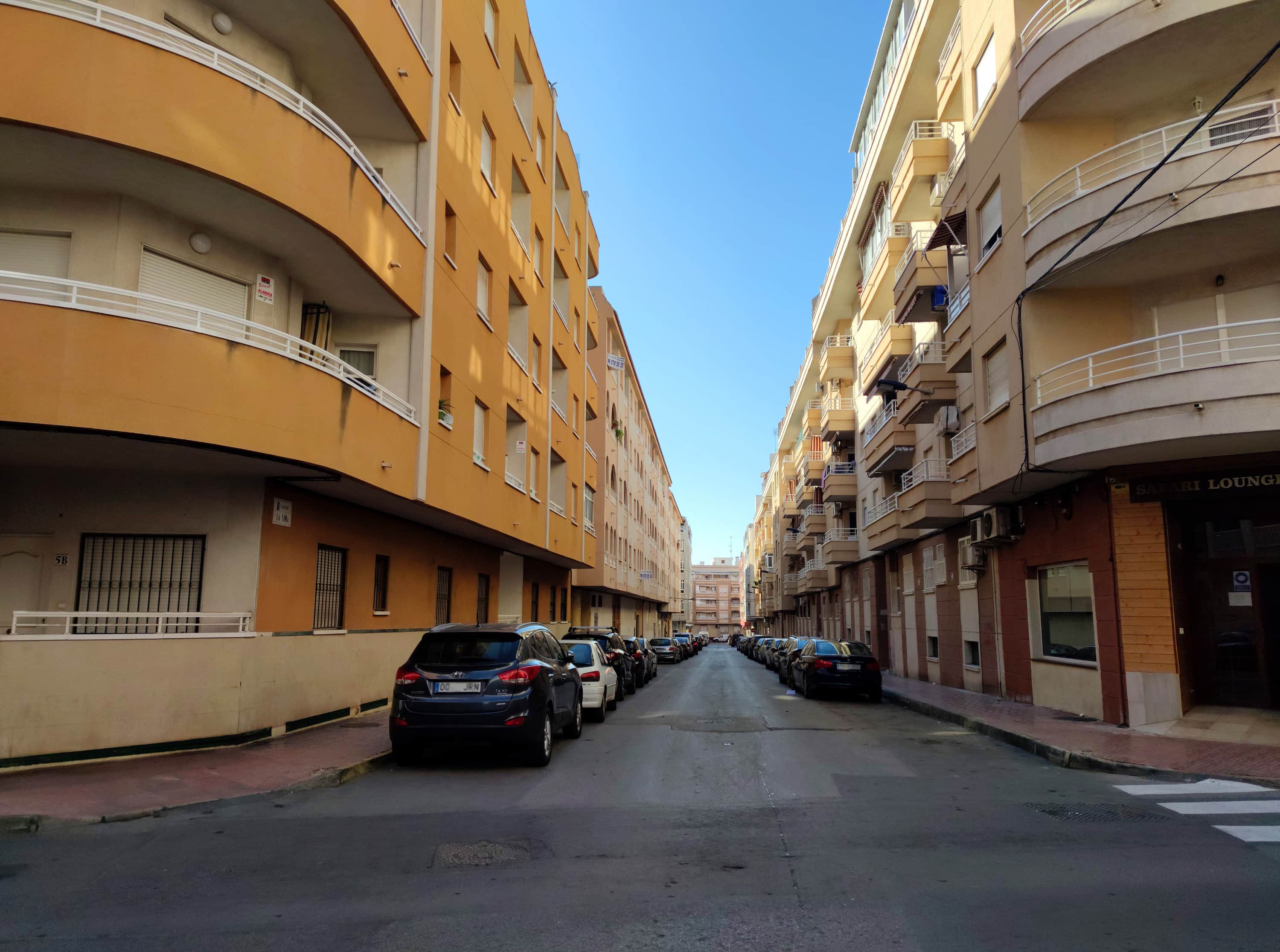
On the outskirts and in the vicinity of Torrevieja, houses are lower – mostly 2-storey, villa type. They are located at a greater distance from each other. The streets themselves are wider. So, there are nearly no problems with access to sunlight. And the houses themselves are more comfortable and more expensive.
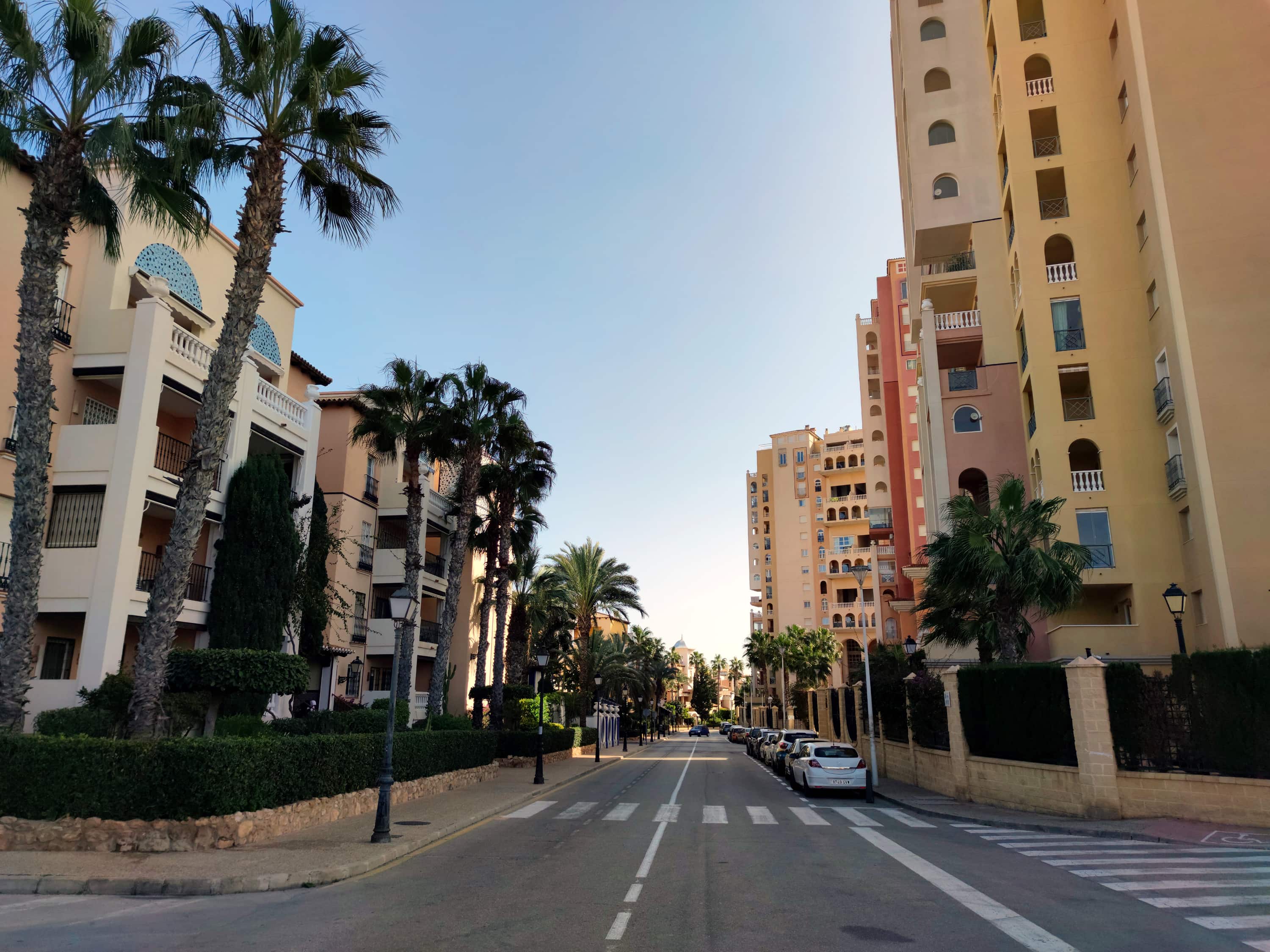
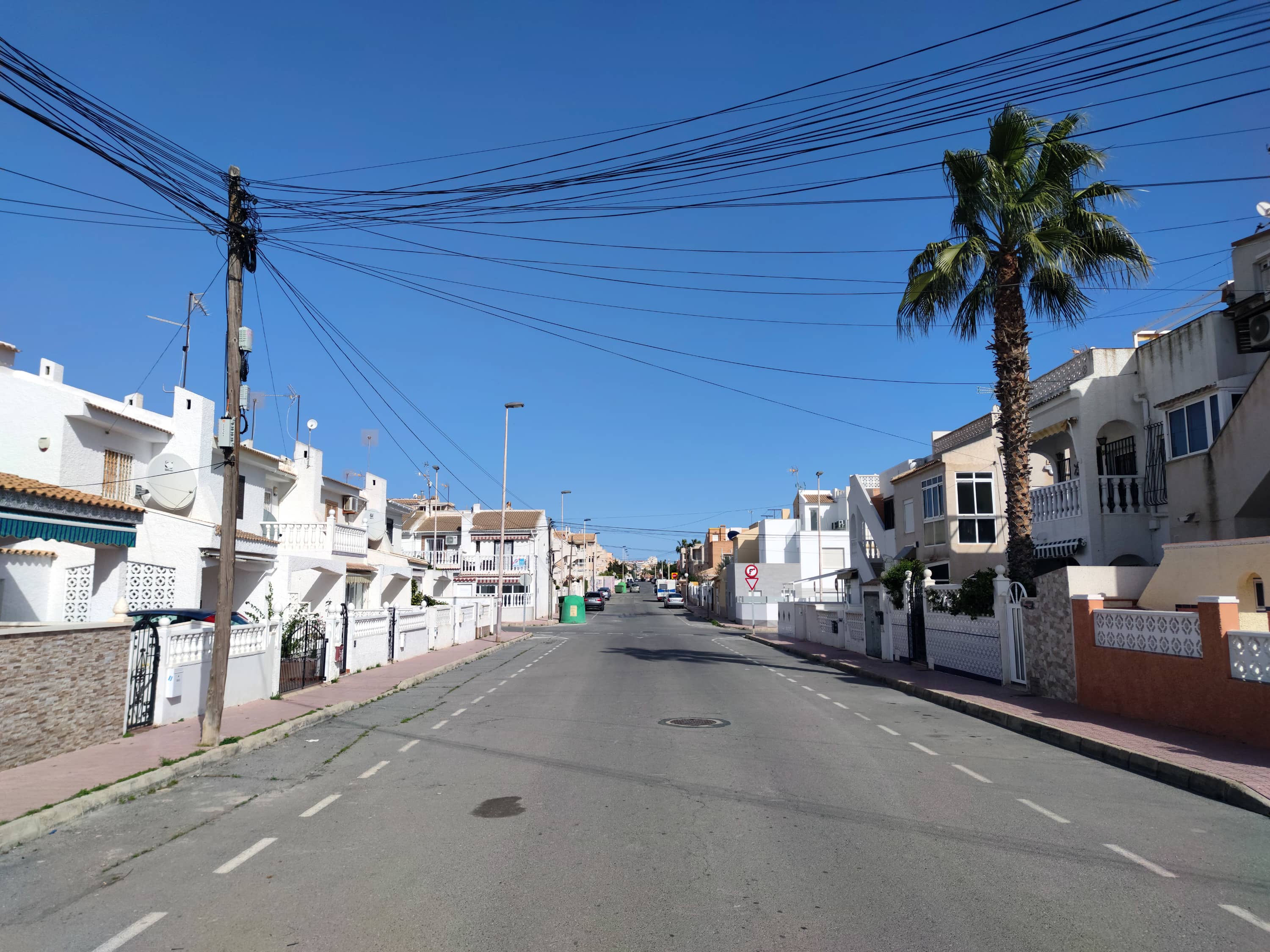
The promenade of Torrevieja is one of the best examples of seaside architecture. Long, beautiful, wide enough. Tourist infrastructure (for example, bars and restaurants) is very organically integrated into the waterfront.
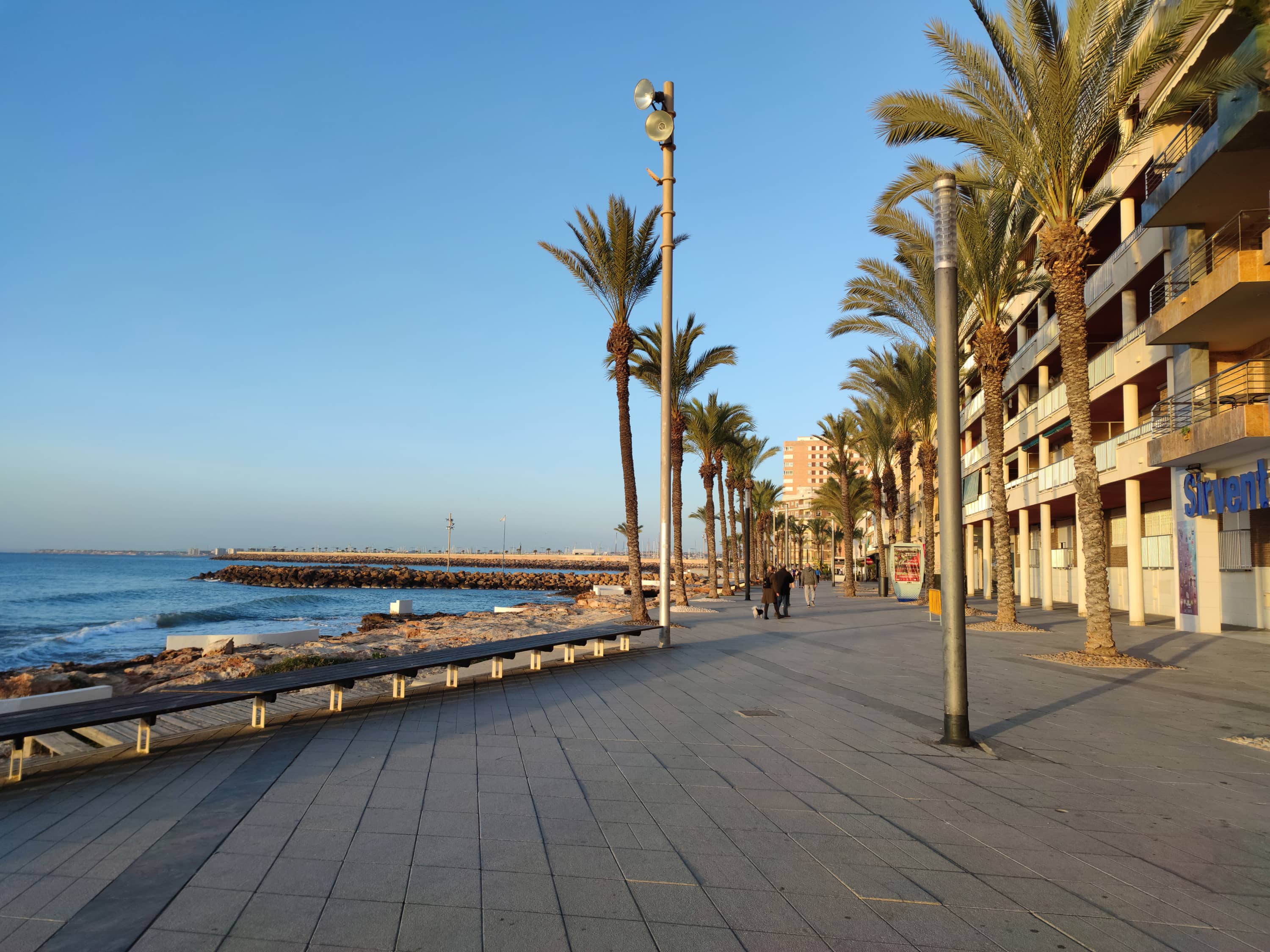
There are many bike paths and cyclists in Torrevieja and the surrounding areas.
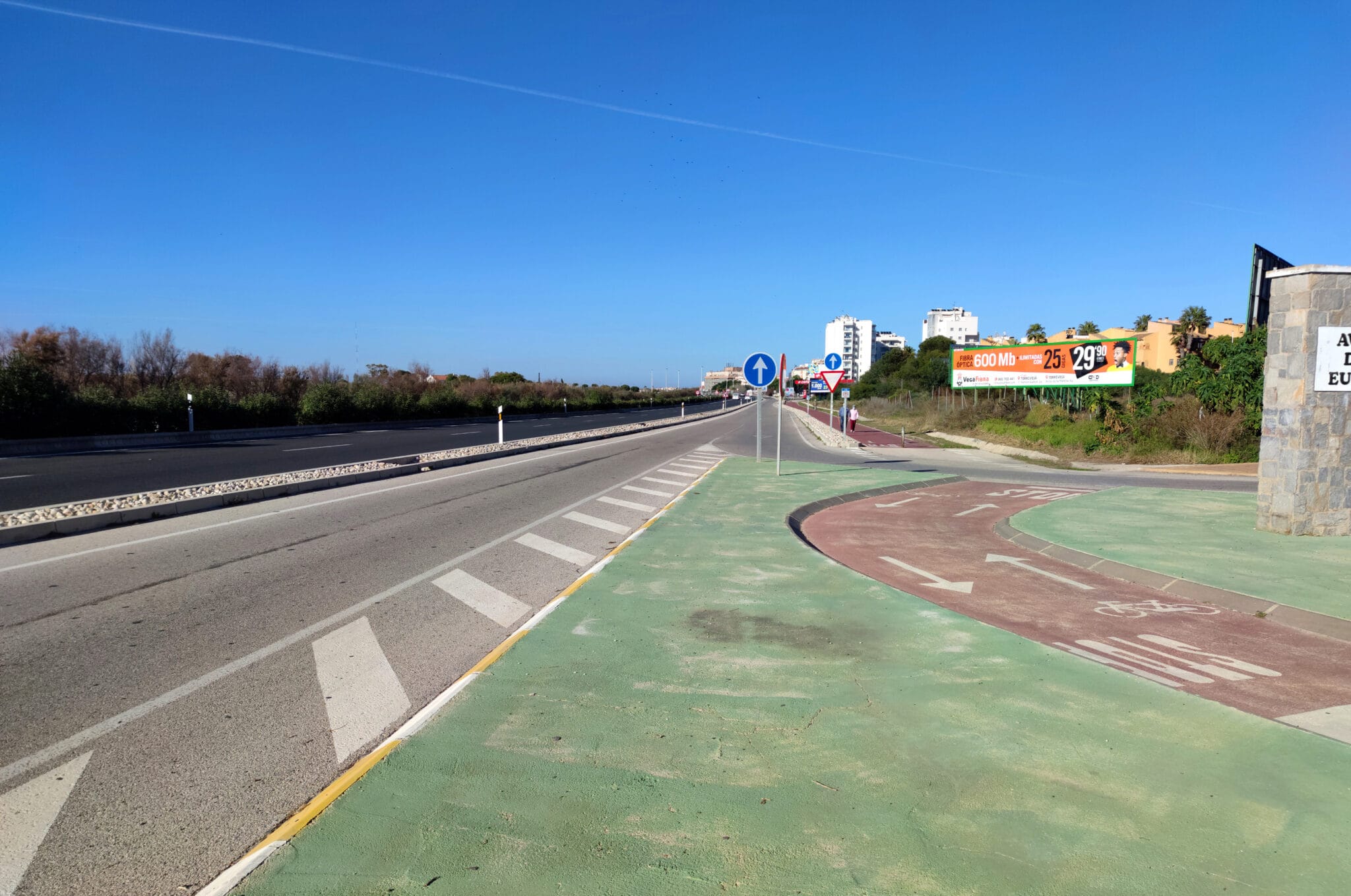
Summary
That’s the end of the Torrevieja intro. If you are interested in our city, you can find a lot more helpful information on TorreviejaExplorer.